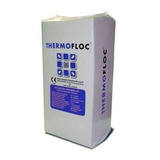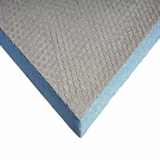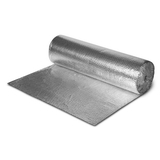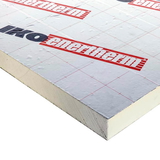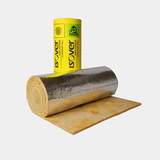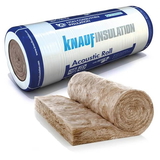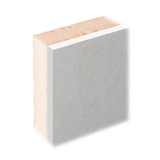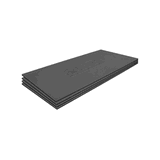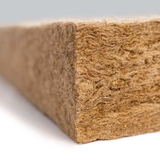- Blogs
- Where to insulate in a home?
Where to insulate in a home?

Introduction
Today, more than ever before, we are conscious of how, when and where we use energy. We know how it impacts the environment and our daily lives, especially where our bills are concerned.
The recent war in Ukraine has pushed gas and oil prices to record highs, doubling within the space of weeks even. Therefore it is more important than ever to make sure our homes are as insulated as possible, preventing precious heat which we have paid good money from escaping.
Structures built in accordance with recent building regulations, plus those upgraded with energy-efficient lighting and HVAC systems such as heat pumps and Mechanical Ventilation with Heat Recovery, are more energy-efficient than ever.
To make your facility more energy-efficient, you need to insulate it. Insulation is and continues to be one of the most reliable, critical and cost-effective methods to make a building energy-efficient. Any of the other systems put in place to save energy in a building will not work as successfully as it would, without proper insulation.
The many advantages of blanketing your house or building with insulation is something we have discussed at length here at Buy Insulation Online.
In this blog, we will be discussing all the areas that you need to insulate in your facility or home.
Why is insulation important?
Insulation bears three main advantages: occupants comfort increases,  energy bills money savings increase and your carbon footprint decreases.
energy bills money savings increase and your carbon footprint decreases.
Britain is known to have a lot of the oldest and least energy-efficient building stock in Europe. If the UK is to meet its goal of being carbon neutral by 2050, more regulations concerning insulation need to be implemented. Measures need to be taken to properly insulate every home and building in the UK.
Net-zero carbon emissions could be achieved by reducing the energy spent to warm each building. To prevent the loss of conditioned air in your facility, you need to install adequate insulation. Insulation reduces the quantity of heat lost through walls, floors and roofs, which means you will need less energy to warm a home or building.
You also have to think about pipe insulation, duct insulation and valve jackets to make sure that all the money spent heating water and air which in turn heats spaces within your home or building are conserved as much as possible. Insulating these systems makes them more efficient, which is the key to optimal performance building.
Where to insulate in a home?
 Apart from conserving the environment and energy, insulation will also help you save significantly on energy expenses. According to the Energy Saving Trust estimations, just by installing proper cavity wall and loft insulation, a semi-detached three-bedroom home can save up to £310 on energy expenses, in just one year. If ALL pipework, floors and walls in the house were to be insulated, one could only imagine the savings, both in terms of energy and money. A properly insulated home will have a higher EPC ranking and having a greater EPC equates to an increase in property value. So, by installing adequate insulation in your home, you will increase its value when you plan to sell or rent out your property.
Apart from conserving the environment and energy, insulation will also help you save significantly on energy expenses. According to the Energy Saving Trust estimations, just by installing proper cavity wall and loft insulation, a semi-detached three-bedroom home can save up to £310 on energy expenses, in just one year. If ALL pipework, floors and walls in the house were to be insulated, one could only imagine the savings, both in terms of energy and money. A properly insulated home will have a higher EPC ranking and having a greater EPC equates to an increase in property value. So, by installing adequate insulation in your home, you will increase its value when you plan to sell or rent out your property.
It is also worth noting if you are a landlord, from 1st April 2020, landlords must ensure the Energy Performance Certificates on their properties meet at least E standard and from 2025, mandatory EPC 'C' rating for new tenancies.
Insulation also helps with soundproofing. It effectively absorbs noise and will decrease the sound transmission through the structure. Well insulated walls usually keep outside noise at bay, giving you a quieter and more comfortable indoor environment.
Where do you need to insulate?
On average, a typical house loses around 25% of its heat through the roofs. Around 35% to 40% of energy is lost through the walls and another 10%- 20% through doors and windows, followed by the floors.
So first, let us look at these obvious areas that need insulation. We will then explore some other parts of a building that would need to be insulated as well.
Loft insulation:
Air expands when heated. The lighter, warmer air spreads and moves upwards by the principle of convection. When this heated air meets no barrier, meaning- when the roof or loft is left uninsulated, the heated air that moves upwards can easily escape, and you could be losing big on energy.
If your loft area is simply used for storage, you can insulate at the ceiling level using mineral wool loft insulation rolls. At Buy Insulation Online, we keep loft Insulation rolls from leading brand names like Knauf, Superglass and more. Click here to be taken to our loft insulation section.
Roof insulation:
With efficient roof insulation in place, you can convert your loft into a cosy living area. A pitched roof can be insulated in between, over or under the rafters. Typically, two of these approaches are combined to effectively insulate roofs.
Insulation slabs and rolls of mineral wool-like Rockwool RWA45, Knauf Rocksilk, Knauf Omnifit, Rockwool Flexi offer efficient between rafter insulation. You can also use multifoil insulation like Actis Hybris Insulation panels to insulate in-between rafters. These are typically combined with under and over the rafter insulation, for best results.
For between or above rafter insulation, rigid PIR insulation boards are generally used. The foam insulation boards from Celotex (XR4000 and GA4000) are amongst the most thermally effective insulation materials available in the marketplace today.
Apart from the standard PIR insulation, insulated plasterboards like Knauf XPS or Xtratherm Thermal Liner can likewise be utilised to insulate over or below the rafters. Foil insulation rolls like SF19+ are also a viable option if you want a change from the conventional mineral wool insulation approach.
Wall insulation:
 Before you proceed and insulate walls you need to understand the kind of walls you have. You ought to thoroughly examine the makeup of your building before you even begin to insulate the walls.
Before you proceed and insulate walls you need to understand the kind of walls you have. You ought to thoroughly examine the makeup of your building before you even begin to insulate the walls.
Homes in the UK mostly have three main primary kinds of walls. The age of your property could be an indication of the type of walls you may have. The dates provided below are only an approximate of the kind of walls you could have:
Insulated cavity walls - brick and block - 1975-76 onwards.
Uninsulated cavity walls - brick and block - 1920-1975
Solid wall - brick or stone - pre 1919/20.
Cavity wall insulation:
You will require cavity wall insulation if your home was constructed after the 1920s. The cavity or space present between the outer and inner wall layers is insulated using mineral wool cavity insulation batts or slabs. Polystyrene beads can also be used to insulate these cavities. Here at Buy Insulation Online, we store high-quality cavity slabs and batt insulation from Knauf, Superglass and Rockwool.
You can insulate solid walls either internally with insulated plasterboard also, or externally as discussed next.
External wall insulation:
The external wall insulation is done by using light-weight EPS or XPS Boards, PIR insulation or other light-weight insulation boards.
External wall insulation can be extremely beneficial.
- The initial masonry on the wall stores heat, which the insulation boards reflect indoors, thus preventing the heat from escaping. External wall insulation is like a thermal blanket around your building.
- External wall insulation enhances the look of the structure and adds a new weathering layer to it. To insulate the external walls, the fittings and fixtures on the wall, need not be removed. Not all houses are suitable for this due to the width of soffits and windows so expert advice from an external insulation installer needs to be sought
- Since most of the work is done outside, the process equates to less hassle and mess indoors, also indoor space will be preserved and not building out insulation from the internal walls into the internal floor space.
Internal wall insulation:
While internal wall insulation efficiently insulates walls and decreases energy loss, it is not the most preferred option when compared to insulating external walls. Internal wall insulation can be costly and requires proper planning before it is carried out.
The most typical way of insulating internal walls is to put up a stud wall on the existing internal wall. Mineral wool insulation rolls/slabs or stiff PIR boards are used to insulate stud walls. Insulated plasterboards can also be used for this purpose.
Floor insulation:
Generally, you are just required to insulate the ground floor. Insulating the upper floors is only recommended if these floors are above unheated areas such as garages, as you might be losing a lot of heat through those.
Floor insulation depends upon the kind of flooring you have. Modern houses will have a ground floor made from strong concrete, which can be insulated using rigid PIR boards if need be.
Timber floors, on the other hand, can be insulated either by:
- Removing the existing floorboards, insulating the area underneath using mineral wool insulation and placing the floorboards back.
- Or by insulating the floor from underneath using foil-faced PIR insulation, utilising the crawl spaces. Cut the PIR boards so they fit snug and tight in between the joists so they will not fall out over time.
Windows and doors:
It is the small spaces around the doors and window frames that can result in significant heat loss in any structure. By making use of thicker curtains, well-fitting shutters or double-glazed or even better triple-glazed panels you can lower the heat loss associated.
It must be said that these are areas that you lose heat the least compared with the above measures so the previous walls, floors and ceilings should be tackled first for the most cost effective gains.
Do not forget to insulate pipes!
Lagging pipework that is outside a building or internal areas where there is no source of heat like lofts and garages is critical. The pipes in the loft  space is prone to freezing if the roof is insulated at internal ceiling level only.
space is prone to freezing if the roof is insulated at internal ceiling level only.
Lagging hot water pipelines help maintain the temperature of the hot water, therefore eliminating the need to reheat it. Coldwater pipelines can be protected from sweating or freezing by insulating them.
Uninsulated pipework can cause more than just a loss of energy and cash. When pipework is left un-insulated, it will most likely freeze over ultimately resulting in bursts, which just results in a great deal of damage to the structure of the building.
We have talked about this at length in our other blog about Pipe insulation found here
At Buy insulation Online, we have carefully chosen and brought together a range of pipe lagging options from well known brands like Armacell, Rockwool, Isover and Kingspan. Pipe insulation is supplied in standard sizes and can be used to insulate almost all types of pipework. The fibreglass pipe insulation from Isover even soundproofs the pipework, making for a quieter home or workspace.
The cold and hot water tanks in your house require insulation as well. They can be insulated using insulating jackets, which are really easy to work with. Simply follow the instructions that come with the insulating jacket. You can find insulation jackets at a local DIY store or here at Buy Insulation online. We make the best quality, custom-made, insulating jackets for valves, flanges and tanks you can find on the internet.
Duct insulation:
Heating, Ventilation and Air Conditioning or commonly called HVAC system, plays a significant role in energy usage for structures, particularly in industrial and commercial settings. It is essential to ensure that all your ductwork is insulated properly. Also, your home or building needs to be properly ventilated so as to reduce the moisture build-up inside the facility.
energy usage for structures, particularly in industrial and commercial settings. It is essential to ensure that all your ductwork is insulated properly. Also, your home or building needs to be properly ventilated so as to reduce the moisture build-up inside the facility.
Duct systems are installed to ensure you get warm or cool conditioned air as needed. It also clears out any stagnant air lingering. Ductwork can be insulated using duct wraps or duct insulation boards.
Foil insulation rolls for ducts enhance indoor air quality and lower the functional noise produced by the ducts. Duct insulation reduces any heat loss or gain in ductwork, reducing energy wasted.
In conclusion:
You are likely to reap many benefits and save highly in heating bills, by insulating almost every part of your home or building. Ensure that the insulation is installed properly. If you cannot do the job yourselves, it is best to get professionals to work.
If you need help with getting your building insulated, contact us so we can put you in touch with our professional network. We can site visit to help with measuring up pipe insulation, duct insulation and valve jackets.
So make your building as energy-efficient as possible with superior quality insulation materials, valve jackets and much more. Choose Buy Insulation Online for all your insulation needs and become carbon positive, by planting three trees per order!
For superior quality pipe lagging, duct wraps, valve jackets, loft and wall insulation, visit Buy Insulation Online.

Samuel Hitch
Managing Director
Buy Insulation Online.
Leave A Reply
Your feedback is greatly appreciated, please comment on our content below. Your email address will not be published. Required fields are marked *
